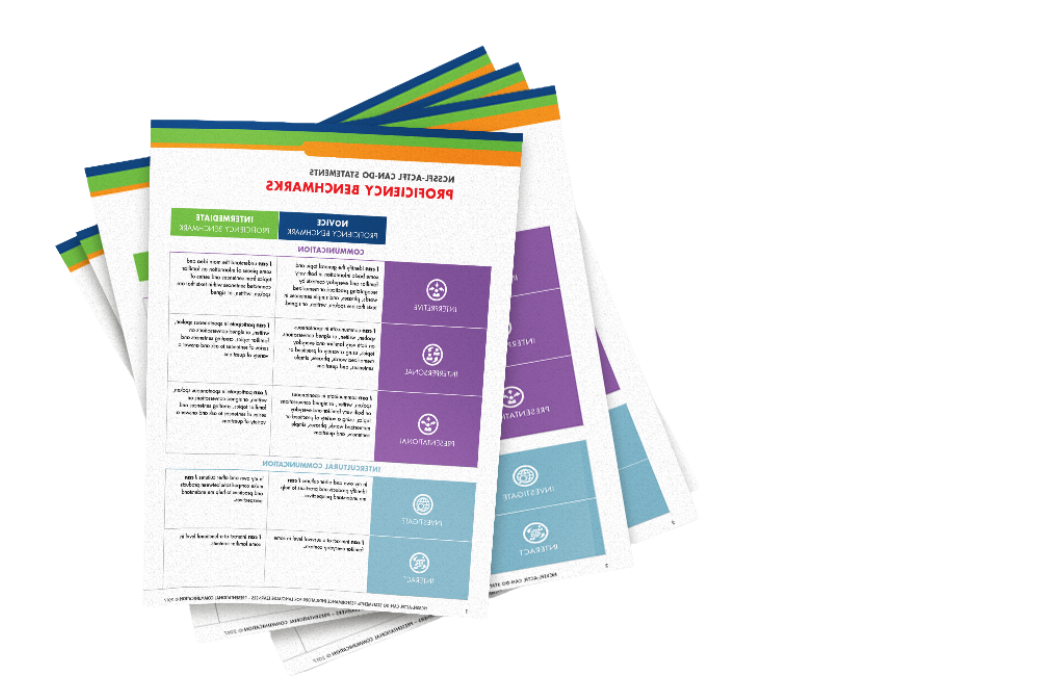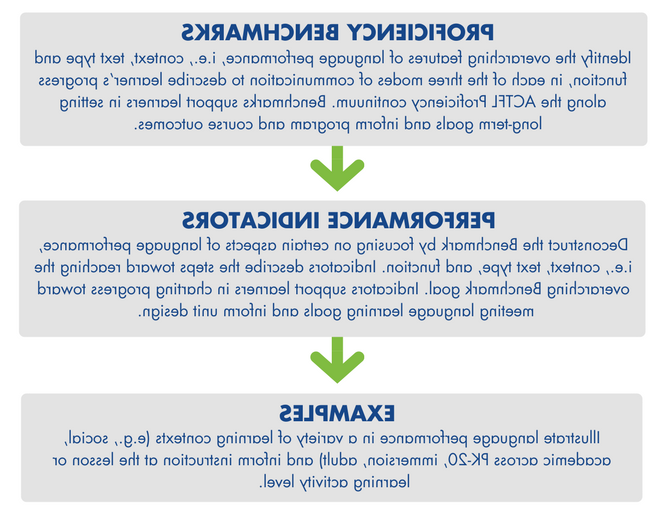学习目标, 用Can-Do语句表达, provide an important venue for setting learning goals to provide language learners the opportunity to take responsibility for their own learning through the establishment of positive short-and long-term learning goals and to monitor their learning experiences to ensure the accomplishment of these goals. 智能(具体, measurable, achievable, relevant, 有时限的目标, 比如Can-Do语句, 为学习者的语言学习提供一个明确的方向,帮助他们实现这些目标. Such a constructivist or sociocultural worldview regards learning as an ongoing process where learners are continually involved in self-assessment and self-reflection about their own learning, 最终目的是发展自我调节和自我效能.
Can-Do语句对学习者和学习者成就的影响, 正如LinguaFolio®(LF®)及其欧洲前身所证明的那样, 欧洲语言组合(ELP), 已经被越来越多的研究机构调查过了. LinguaFolio®旨在帮助语言教育者发展自主学习和学习者赋权. 课堂层面的研究揭示了目标设定, 什么是LF®和ELP的核心, 促进自主学习, 提高语言和学业成绩, 提高动机和任务价值, 并在定期和频繁地实施时改善自我星际网赌登录(伯顿) & Swain, 2014; Ciesielkiewicz & Coca, 2013; Little, 2009; Little, 2003; Little, Goullier, & Hughes, 2011; Moeller, Theiler, & Wu, 2012; Ziegler, 2014; Ziegler & Moeller, 2012; Clarke, 2013; Moeller & Yu, 2015). Learners who experienced LF® as an intervention in the world language classroom achieved higher academic outcomes as measured by cumulative GPA and ACT scores in math, science, reading, 与未接触LF®(Clarke)的学生相比, 2013).
这些研究表明,设定目标的主要组成部分, 记录进展, and self-assessment of learning are critical in developing learner autonomy and self-regulation in language learners that contribute to increased motivation, 较高的语言水平, 以及学业上的成功.


